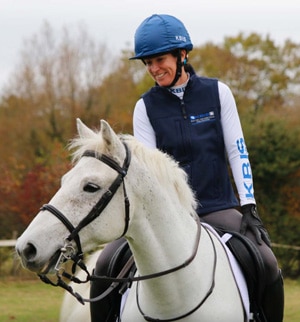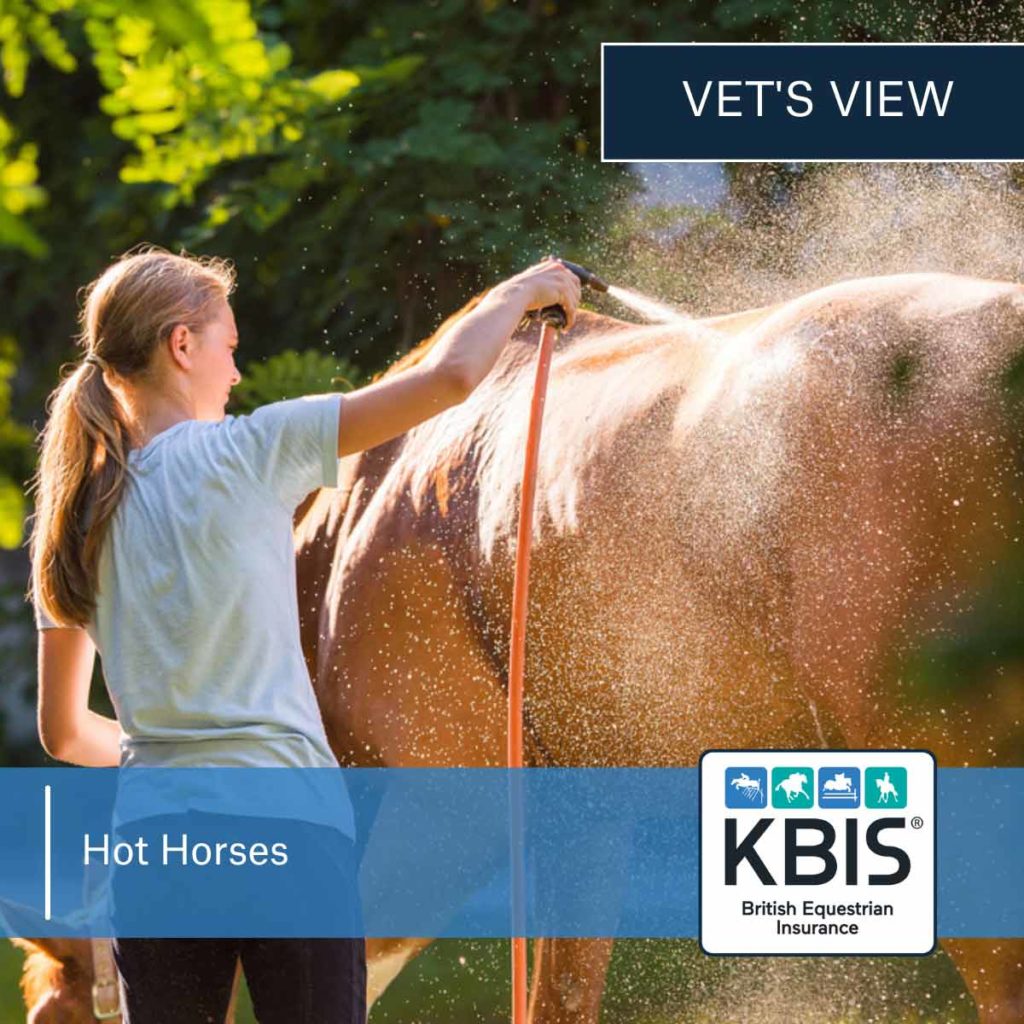The warmer weather is a bit of a shock this year, with some parts of the UK set to reach temperatures hotter than Tokyo this week.
This means both we and our horses are unlikely to be acclimatised to the temperatures this brings. Given time, horses can become accustomed to extremes of temperature and some breeds have evolved to be particularly efficient at this, a prime example being the Arab horse in the desert- where a 30-degree shift in day-night temperature is not unusual.
Particular problems arise when the horse has to work in extreme heat. Horse’s have a relatively large muscle mass and low surface area to mass ratio. Heat is lost by radiation and evaporation of sweat so it is a disadvantage to be large and muscular if you need to lose heat quickly. In order to increase heat exchange skin’s blood vessels engorge and bring the blood to the surface from where heat is lost. An example of this is most obvious in racehorses after a race, but the same mechanisms are present even in the smallest of hairy ponies. Cooling will only occur when there is a heat “gradient” or difference between the horse and its surroundings. This will be very much reduced when the air temperature is around 30 degrees. Heat is also lost through respiration; the respiratory rate may rise a little, noticeable especially if the lungs are compromised in some way, such as individuals who may have inflammatory airway disease or asthma.
Most people will be doing the sensible things of avoiding exercising in the hottest part of the day, providing ad lib water for their horses and providing some degree of shade, or bringing them in during the day. Water consumption increases in hot weather to compensate for that lost through sweat and evaporation from the respiratory system. It is obviously cooler in the shade but if stabled, it is absolutely essential to have adequate ventilation. Traditional stables, especially of wooden construction can easily heat up and become saunas. The use of electric fans can provide a welcome breeze. In hot weather, it can be advantageous to add water to the feed and provide wet hay as this can increase water intake. Forage holds fluid and provides a reservoir in the hindgut. In cases where there is insufficient water intake or the horse is particularly hot, the fluid absorbed from the gut can be excessive and impaction colic can result. If the horses are out in the field with self -filling troughs these should be checked regularly as they often go green with algae in hot weather and the water becomes unappetizing to some.
Electrolytes which are essential for muscle function are lost in sweat. In hot weather, a tablespoon of kitchen salt in feed will help to replenish this or you may choose to use commercially available electrolyte preparations. These can be given in water, but fresh water should always be available as well as some horses do not like the taste of electrolytes.
There are occasions when riding in the heat of the day is unavoidable, especially if you are competing. It is important to be adequately prepared, take plenty of water from home even if there is some available at the venue. Some horses will not drink strange water! Another tip is to take the horse’s own water bucket from the stable. We’ve all heard of horses who will not drink “home” water in a “strange” bucket! If you have a choice, park your vehicle where there is shade. Ensure all the windows are open and put the ramp down. Should you be fortunate enough to have electric fans in your lorry, run them every so often. If attending to the horse outside of the horsebox do this in the shade. Have drinking water available at all times that you are not riding. Allow the horse access to forage as this will help hold water which will be absorbed from the gut when required.
Much research was carried out before the Atlanta Olympics on cooling horses after exercise. In the larger events, we now see tents with fans emitting cooling mists but your yard or local show centre is highly unlikely to have such luxury! The best method in this situation is to apply copious amounts of water over the neck and body. More recently, there has been debate surrounding whether it is necessary to scrape off excess water afterwards over concerns water magnifies in the sun or heats up as it evaporates. There is no truth to this and whilst scraping off excess water is not likely to be detrimental to the cooling process, to cool your horse most effectively, this time is better spent applying additional water to them.
Under no circumstances should cold towels be placed over the neck as these rapidly become hot towels and there is no facility for evaporation. Offer water as soon as you have finished your round or ride and encourage him to drink. If your horse is a particularly sweaty type and you are competing regularly it is probably better to clip him out as it will be easier to keep him cool. This is probably not an option for show horses but showjumpers can be regularly clipped all year round.
By far the most important thing in this weather is keeping your horse cool but other problems can arise, particularly in bright sunlight. Horses are just as susceptible as humans to sunburn and pink noses should always be protected. A full-face mask which reaches over the nose is useful if the horse is out at grass, and this can also keep flies away from the eyes. However, it is advisable to also apply sunblock. Factor 50 (designed for children) is the best and should be applied regularly.
Flies, both biting flies such as horseflies and nuisance ones around the eyes are always worse during the summer and a good fly repellent is essential. A pymerthrin-based one which is applied all over the horse is best. This lasts longer and can also be of use against midges for individuals suffering from sweat itch. The use of fly repellent is essential if you have a horse with sarcoids, or share the premises with one. Flies are important in the spread of these unpleasant tumours as they pick up the virus and spread it to another place on the affected horse or to another susceptible one. Many people find fly rugs useful, some of which come impregnated with pymerthrin to repel flies and being white or light in colour they do help to reflect the sun’s rays and so may aid a little in cooling.


